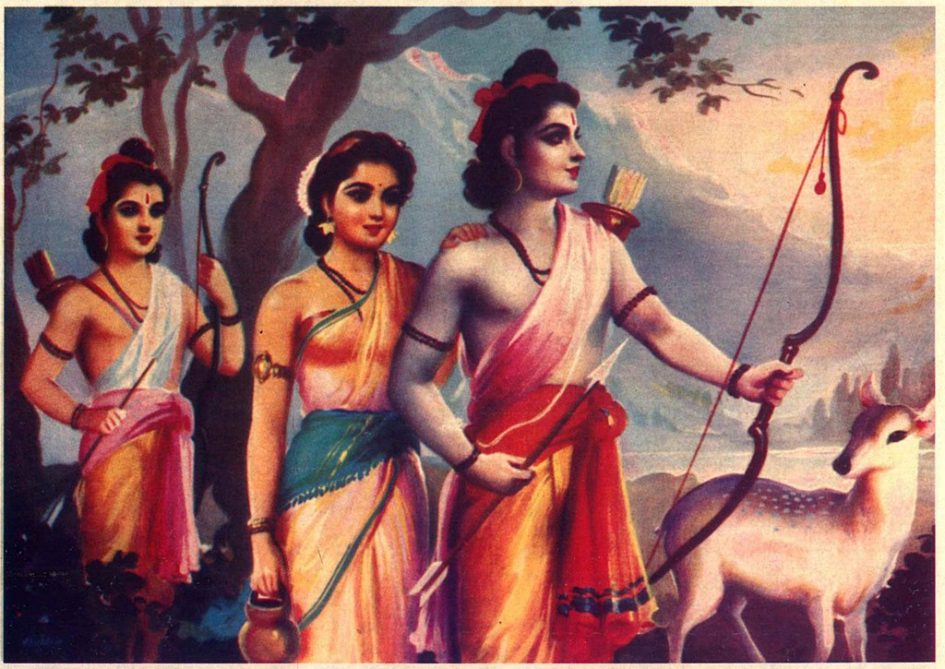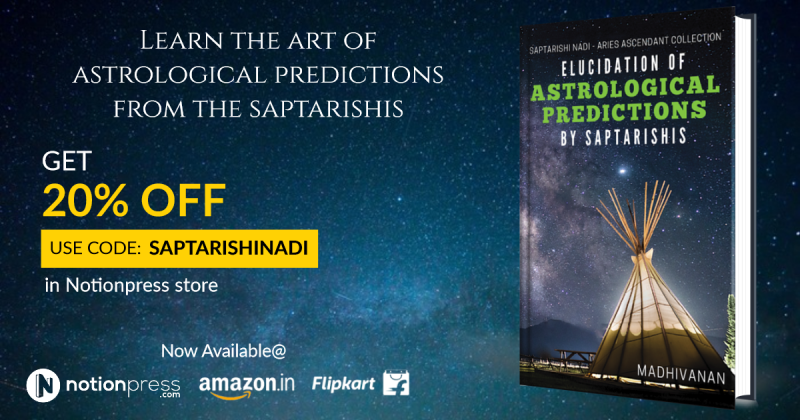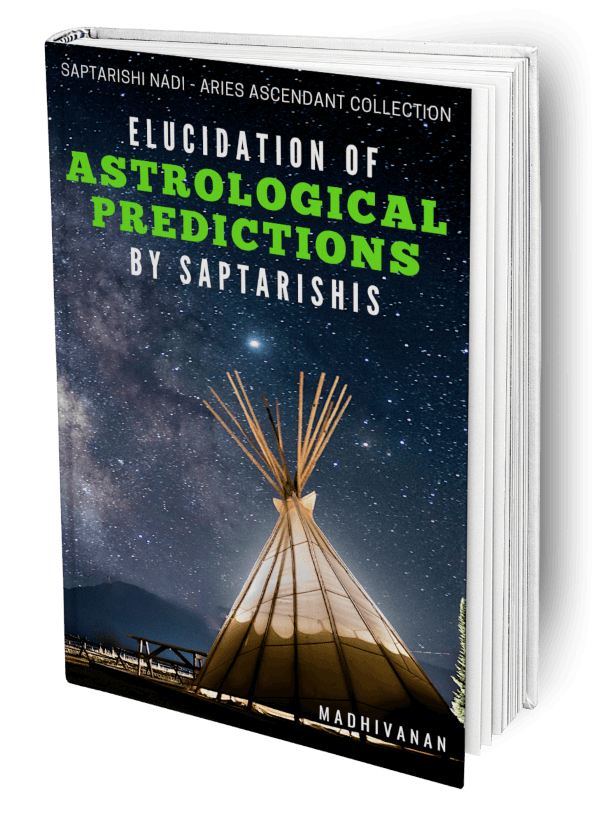Ramayana and Mahabharata are the two great ithihasas (history) of the Indian subcontinent. Ramayana tells the story of Sri Rama, who is considered to be the incarnation of the god Vishnu. His birth in the city of Ayodhya has been recorded by sage Valmiki. Though Indian astrologers follow sidereal zodiac to construct a horoscope, Sri Rama’s birth chart is definitely tropical. It defies the definition of sidereal zodiac, rendering his chart under sidereal zodiac an absolute impossibility.
Table of Contents
Sri Rama’s horoscope
“Kamba ramayanam” by the poet Kamban retells the story of Ramayana in Tamil language. It is believed to have been penned down in the 12th century. Kamban records the birth of Rama thus:
மேடமா மதிதிதி நவமி மீன்கழை
நீடுறு மாலைகர்க் கடக நீதிசேர்
ஓடைமா களிறனா னுதய ராசிகோள்
நாடினே காதசர் நால்வ ருச்சரே
Sri Rama was born in the month of Aries, during Navami Tithi. The nakshatra was Punarvasu. Mercury is in the 10th house. The ascendant was Cancer. Regarding other planets, the four planets related to the 11th houses were exalted.
The planetary position described in the last line deserves explanation. Four planets are in exaltation, and they happen to be the lords of the 11th houses. These four planets would be: the 11th house lord from the ascendant — Venus; the 11th house lord from Taurus — Jupiter; the 11th house lord from Pisces — Saturn; and the 11th house lord from Capricorn — Mars.
The Sun was definitely in Aries as the poet describes the month as Aries. It is a well-known fact that our sages followed a luni-solar calendar. The month of Aries starts when the Sun enters the sign of Aries. So totally five planets were in exaltation. The question is whether it is sidereal Aries or tropical Aries. Let me explain.
Possibility of sidereal zodiac in Rama’s horoscope
Figure 1 depicts the sidereal definition of the zodiac system. The nakshatras define the zodiac signs, viz., Ashwini, Bharani, and the first quarter of Krttika define Aries, and so on. Accordingly, the first 3 quarters of the nakshatra Punarvasu falls in Gemini, and the last quarter in Cancer.
Rama’s Moon was in the nakshatra Punarvasu and also in Cancer. No problems here. The problem starts when one takes into account that the thithi was Navami.
Sri Rama was born on navami
Thithi is the lunar day of the month, when the angle between the Sun and the Moon progresses by 12°. As the thithi is Navami (ninth day), the Moon has completed 8 lunar days; so, the Moon is at least 8 × 12° = 96° away from the Sun. According to the sidereal zodiac, Punarvasu begins at 20° Gemini and ends at 3° 20′ Cancer; in other words, 80° – 93° 20′ from the start of Aries. Even if Rama’s Sun was at the very beginning of Aries, the Moon could not be less than 96° from it. This means that the Moon is beyond 6° Cancer, past the end of Punarvasu as depicted in Figure 2.
Therefore, we see that the following three conditions cannot be fulfilled together under sidereal zodiac:
- The Sun in Aries.
- The Moon in Cancer in the nakshatra Punarvasu.
- The thithi is Navami.
Obviously, the first two conditions are possible under sidereal zodiac. But if the day has to be Navami, it becomes untenable. Some astrologers have suggested that the Sun was not in Aries, but was in Pisces to work around this problem. Why alter the birthtime of Sri Rama to suit your zodiac? That will be ridiculous, of course!
C. G. Rajan’s opinion on Rama’s horoscope
I reproduce here the words of shri C. G. Rajan, the editor of the book, “Saptarishi Nadi – Kataka Lagnam”, published by the Goverment Oriental Manuscrips Library, Madras in 1956.
In the horoscope of Rama, the Sun was in exaltation in Mesha rasi, the Moon was in Punarvasu nakshatra (constellation) and the tithi (i.e., the age of the Moon) was Navami, the ninth tithi. Even if we take the extreme case of the Sun being in the beginning of the first degree of the sidereal Mesha rasi, and the Moon being in the end of the last degree of the constellational Punarvasu (i.e., at 93°20′ of the sidereal Nirayana longitude, the elongation (i.e., the distance) of the Moon from the Sun would be 93° 20′ at the most. This elongation of 93° 20′ would mean only Astami (i.e., eighth) tithi at the rate of twelve degrees for a tithi, and the tithi would not thus have been the Navami tithi as stated in Ramayana.
If Rama’s horoscope was cast according to the sidereal zodiac, it should be an impossible one and will not represent the true state of the heavens… the Sun should have been in some other place than the sidereal Mesha. If the Sun is shifted backwards by at least 2° 40′ (equal to 96° minus 93°20′), the horoscope of Rama would be a possible one, and this means that the Sun should have been then in Meena rasi of the sidereal (or nirayana) zodiac or the sign Aries of the tropical (sayana) zodiac. If it was the Meena rasi of the sidereal zodiac, then the Sun would not have been in exaltation. It therefore follows that the Sun should have been only in the sign Aries of the tropical zodiac.
Possibility of tropical zodiac in Rama’s birth chart
Now that we have discounted the possibility of sidereal zodiac for Sri Rama’s horoscope, we can consider the possibility of tropical zodiac. As the nakshatras are not bound to the zodiac signs in the tropical zodiac, Punarvasu nakshatra can be anywhere, depending on the location of the vernal/march equinox at that time. Owing to the precession of the equinoxes, the vernal equinox now points to Uttara Bhadrapada, and the Punarvasu nakshatra falls completely in tropical Cancer (Figure 3).
Therefore, if we compute the horoscope of Sri Rama now, it would definitely be a possible one, as Punarvasu nakshatra is further down in Cancer. As we are certain that Sri Rama was not born in the immediate past (about 500 years ago), it would only be possible one cycle back per the precession of the equinoxes. If we take the time for one cycle to be 26000 years, Sri Rama was at least born about 25000 years ago, if we believe it happened in the previous cycle. Or it could be some cycles before that, pushing the date further back, if one is willing to entertain such a possibility.
This interesting fact again negates the argument of dating the Ramayana 12000 years ago, because Punarvasu nakshatra at that point of time falls under the sign of Capricorn and not Cancer. Those who date Ramayana in the present cycle either do not realize that it is not astronomically feasible sidereally or discard the birth chart of Sri Rama as a figment of imagination by sage Valmiki or the poet Kamban.
Indians practised tropical zodiac in the 12th century AD
Even if we take the possibility that the birth details of Sri Rama are not authentic, or worse, Sri Rama himself is an imaginary person (I do believe he is a historical person and an avatara) and sage Valmiki cooked up the story of Rama (very unlikely), the description of the heavens at the time of his birth clearly indicates that sage Valmiki followed tropical zodiac and not sidereal zodiac. If he were to have believed in the sidereal definition of the zodiac, he would not have pictured the heavens in an impossible way.
Suppose we entertain the argument that sage Valmiki never described the birth of Rama, and it was inserted later by other authors, then it proves that those who did, followed a tropical zodiac. The poet Kamban wrote Ramayana in Tamil in the 12th century, and he too subscribed to the tropical idea of the zodiac; otherwise, he would not have so described Rama’s horoscope. If we entertain doubts about sage Valmiki or his description of Sri Rama’s horoscope, it is amazing to note the fact that poet Kamban too described it the very same way as Valmiki did.
To those who argue that sidereal zodiac was used in the past 2000 years in India, the sidereal zodiac as being defined now was very similar to the tropical one during this time period. Only now, the difference between the two has reached a point where it cannot be ignored any longer. Though our ancestors used nakshatras as a reference, they used a tropical zodiac and made necessary corrections to the nakshatra list as and when it became necessary — Taittriya Brahmana lists Krttika as the first nakshatra, for instance.
Summing it up
If we believe in Sri Rama/Ramayana, we cannot ignore the fact that Sri Rama’s chart is a tropical one and our ancestors used tropical zodiac during the times of Sri Rama or sage Valmiki. Poet Kamban’s depiction of Rama’s birth too reinforces the same idea. It definitely rules out the possibility of the use of sidereal zodiac during those times. What’s good for Sri Rama, sage Valmiki, or poet Kamban is good enough for me.
That the saptarishis used tropical zodiac with sidereal nakshatras has been proved without doubt, as explained in my another article.



February 7, 2020 at 4:48 pm
Hi, sir did our Saptarishis used the Navamsa Chart or did our Sages solely utilised the Rasi Chart in the Saptarishi Nadi series? If our sages have utilised the Navamsa Chart may I know the name of the exact Ascendant Collection?
February 19, 2020 at 2:21 pm
If you are asking about the planetary positions described in the saptarishi nadi, they all describe the rasi chart alone. The sages based their predictions 99% on the rasi chart. No navamsa chart has been described. But mentions of Varga chart has been made in a few horoscopes.
December 8, 2021 at 8:22 pm
Sir, your reply above is quite logical and agreeable. Most of the predictive principles in Parasara system of astrology are based on just Rasi chart. Navamsa use is very rare. Being a professional astrologer, I always give my predictions based on Rasi chart only. The accuracy is 99 per cent. I draw some more strength from your assertion. Thanks.
J U B Sastry
January 3, 2022 at 3:15 pm
Even under the sayana (tropical) system, the degrees between sun and moon does not change, if the moon has to be in Cancer. Still it cannot be Navami and at best can only be Astami. How do you explain this?
January 27, 2022 at 6:51 am
In any system, Cancer is the fourth zodiac sign, and so lies between 90 and 120 degrees. Navami is the ninth thithi, and so extends between 96 and 108 degrees from the Sun. If the Sun is at the very start of Aries, the Moon will surely be in Cancer during Navami.
January 11, 2022 at 8:05 am
It can’t be denied but more academic discussion would be highly useful
January 22, 2022 at 12:27 am
Pls share your thoughts. Indeed what you say will be very useful.